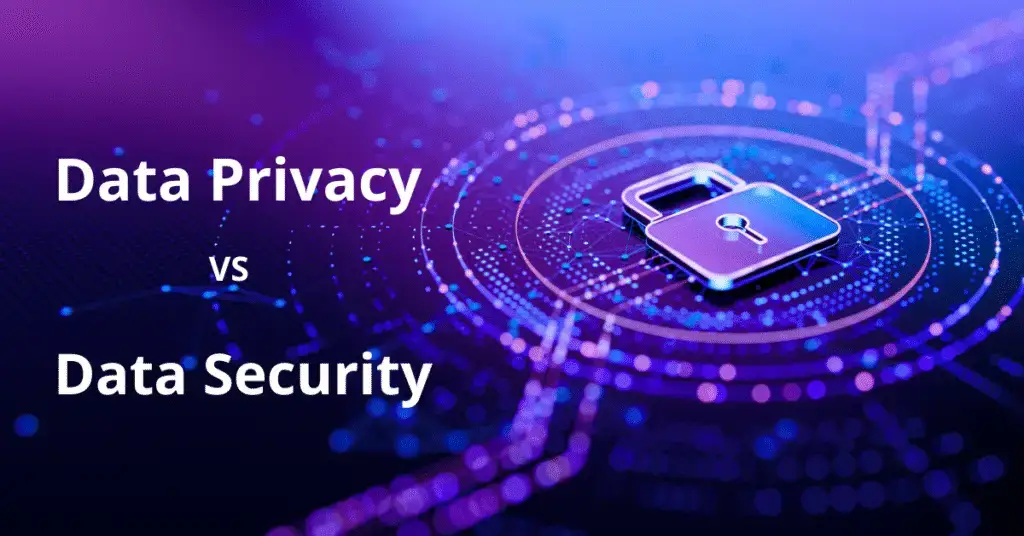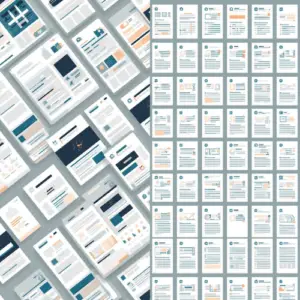
Key Takeaways
- Privacy governs lawful use; security defends systems and data.
- Unify programs with zero trust across identities and data.
- Design controls in early: security by design, privacy by design.
- Minimize data collected; limit purpose, retention, and sharing.
- Prove governance with maps, consent logs, and audits.
Data Privacy vs Data Security: Looking to the Future
Data fuels every product release, campaign, and customer interaction, and leaders are expected to move faster with sharper insights. At the same time, stakeholders expect provable stewardship of personal information. That’s why data privacy & data security isn’t a semantic debate—it’s the foundation of trustworthy operations in an AI-driven world, where AI data privacy and security concerns now shape product decisions, procurement, and reputation.
Yet the reality is messy: sprawling datasets, shadow AI usage, and overlapping regulations make it easy to over-collect, under-govern, and misconfigure controls. Security tools alone don’t guarantee lawful, ethical use; privacy policies alone don’t stop breaches. The practical path forward is a governance-first operating model that unites zero trust architecture, security by design, and privacy by design, reinforced by data minimization and a living data governance framework. Do this well, and you reduce risk and friction, accelerate approvals, and earn durable digital trust—without slowing the business.
What: Defining the Line & the Link
Data privacy manages lawful, transparent, and purpose-bound use of personal data—consent, notices, rights, retention. Data security prevents unauthorized access, alteration, or loss through controls like encryption, IAM, logging, and incident response. In practice, they’re interdependent: without strong security, privacy commitments fail; without privacy governance, secure systems may still misuse data.
Why Now: AI Raises the Stakes
- AI workloads expand data collection and sharing, increasing exposure.
- Model inputs/outputs can leak sensitive information without tight controls.
- Regulators expect demonstrable accountability, not policies on paper.
The upshot: operate privacy and security as one program anchored in AI data privacy and security guardrails, not parallel checklists.
How: Build One Operating Model (Governance First)
- Security by design
Embed controls in architecture and pipelines: encryption at rest/in transit, key management, secrets hygiene, hardened baselines, least privilege, continuous monitoring. - Privacy by design
Specify purposes up front, capture and honor consent, document data flows, set retention defaults, and ensure purpose limitation in analytics and product features. - Zero trust architecture
Assume breach. Verify every identity and device, segment networks, enforce MFA and conditional access, and apply just-in-time, least-privilege permissions for data stores and AI services. - Data minimization
Collect only what’s necessary; prefer pseudonymization or aggregation; reduce identifiers in training sets; de-scope where feasible to lower risk and cost. - Incident readiness
Link privacy and security playbooks: detection, containment, communication, and post-incident remedies that consider both breach obligations and individual impact. - Data governance framework
Define owners, RACI, approval checkpoints, model/data lineage, and audit trails. Make evidence generation (logs, DPIA/PIA summaries, access reviews) part of the workflow—not an afterthought.
Best Practices: Make It Real in 90 Days
Days 0–30
- Inventory personal data and high-risk flows; tag purposes and retention.
- Close obvious IAM gaps; enforce MFA; baseline logging.
- Stand up a governance board that approves AI use of personal data.
Days 31–60
- Roll out security by design patterns to top-risk systems.
- Implement privacy by design defaults in forms, SDKs, and analytics.
- Begin zero trust architecture segmentation for crown-jewel data stores.
Days 61–90
- Operationalize data minimization in ETL/ELT and model training.
- Test joint incident response with privacy/security scenarios.
- Publish data governance framework artifacts: data maps, access reviews, evidence packs.
Program KPIs
- Systems with least-privilege access and MFA
- Records aligned to stated purpose and retention
- Mean time to detect/contain incidents
- High-risk features approved via governance checks
Conclusion
Data powers products and relationships, and teams are judged by how well they turn it into value while respecting people. Yet the landscape keeps shifting—threats evolve, rules multiply, and shortcuts creep into workflows. So the path forward is discipline plus empathy: purpose defined up front, lean collection, clear ownership, and evidence that controls actually work. It’s tempting to treat safeguards as paperwork or a late-stage gate, which invites surprises and erodes trust. A better approach makes proof routine—logs, reviews, drills—and bakes accountability into everyday decisions.
Do this consistently, and you’ll move faster with fewer crises, protect the people behind the data, and remain worthy of the confidence you ask from customers. Need a practical blueprint to align data privacy vs data security with AI-ready controls? We can help you operationalize zero trust, design-time safeguards, minimization, and governance across teams and tech. Let’s talk.





